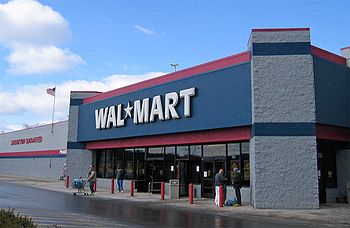The Future of Retail: Bigger & Better or Smaller & Slicker?
The rapid growth of ecommerce and, more recently mcommerce, has forced businesses to question the future of retail.
Where for years it was assumed that the Walmart model of big box = better was the way forward, even the behemoth is starting to think smaller is slicker, in some cases.

With changes to the way consumers search for product information, research, compare and eventually buy, the need to have everything under one physical roof is becoming outdated.
And for some product categories, it's just plain old inefficient.
From Big Box to Smart Shopping
Big box stores developed primarily to serve families who desired a simpler shopping experience.
For all of the criticism leveled at the emergence of Walmart, Target, and Kmart for damaging small business, they ushered in a model that made it far more efficient for busy suburban families to do their weekly shop. Drive right up and everything is under one roof? "Yes please!," said most Americans.
Fast forward a few decades and the focus is now very much online.
Walmart sees this and plans to open up to 300 "Neighborhood Market" stores, with an average square footage of 38,000. That equates to a store 80% smaller than some of the company's cavernous "Super Centers"
As with most industries, the Internet has disrupted the prevailing way of working. It is forcing retailers large and small to consider what new technology means for the future of retail. When customers are doing all the leg work from the comfort of their own home, the moment they choose to come into a store is now much further down the sales funnel. .
In some cases the sale may even have occurred, making physical stores a simple pick up point. If this increases significantly, it makes little sense to focus sales initiatives on the store floor, or to maintain high levels of inventory in a vast big box environment.
Customers Value the Offline Experience
Even with the move online, however, retailers will need to make the transition to smaller stores carefully.
It will be most important to watch customer trends in your own industry to judge where resources will best serve those who want to buy from you. Some measures that could indicate a need to up your online game, while streamlining your offline efforts include:
- Percentage of total sales that are attributed to online channels
- Ratio of searches being conducted on site vs. units sold
- Drop in general store foot traffic, especially if it corresponds with an upswing in store pick ups
- Rise in in-store customer inquiries about a specific product or service, rather than more general questions about a product category.

Is the Future of Retail Entirely Online?
Not all customers have moved online or trust websites to provide all the information they need to make a purchase decision. Many still value the ability to talk to a knowledgeable sales employee, even if they've done some initial research online themselves. Because of this, physical stores and employee expertise will still be important for as far as we can plan the future.
Intelligent businesses will begin to blur these lines, empowering in-store sales staff to answer questions online, especially within their local area. Providing updated sales training as to how the Internet has changed the sales decision process will also give sales teams a better chance to influence customers in their direction.
Even with the ongoing need for physical locations, the challenge will be for businesses to make existing stores more efficient and cross over into online world, rather than fight against it. Because if the "King of Big Box" sees the need to shrink, you can bet others will have to follow!